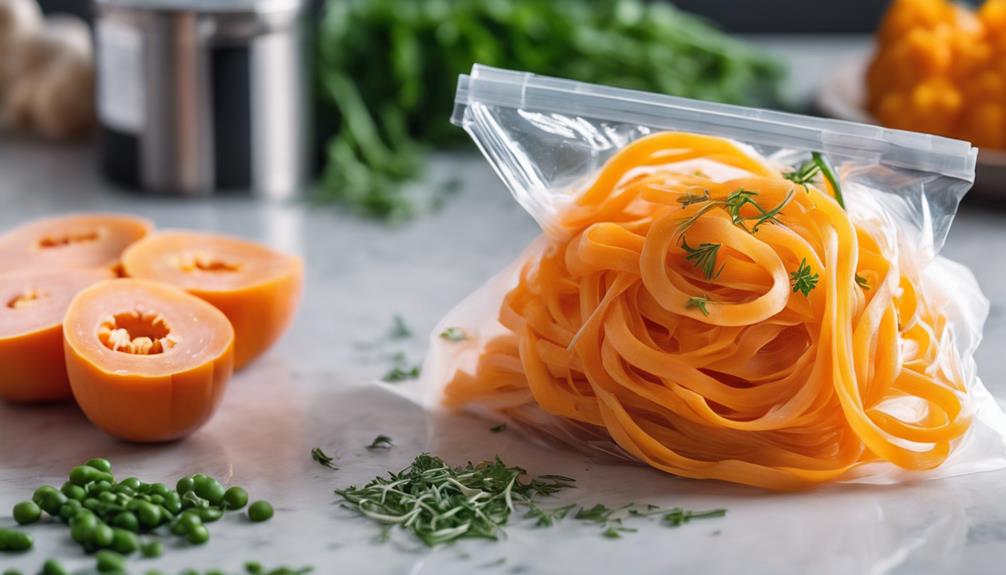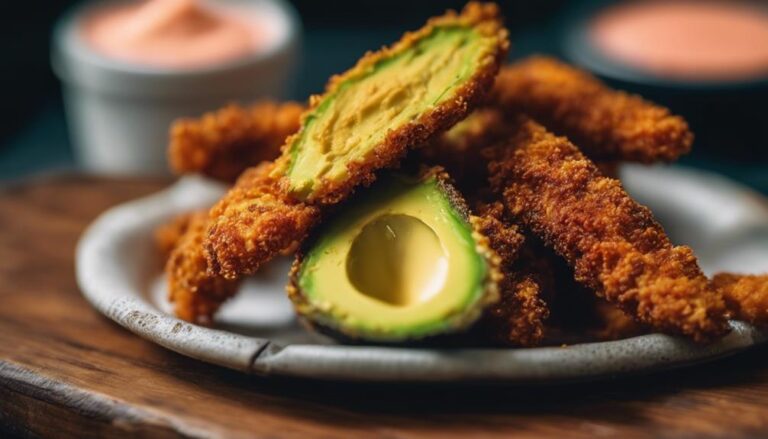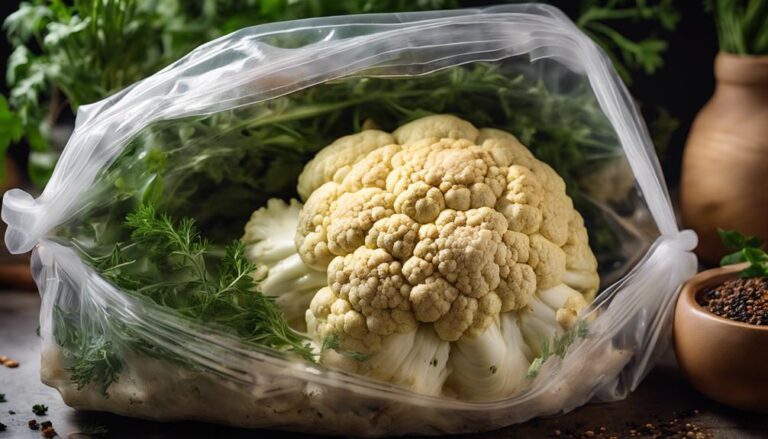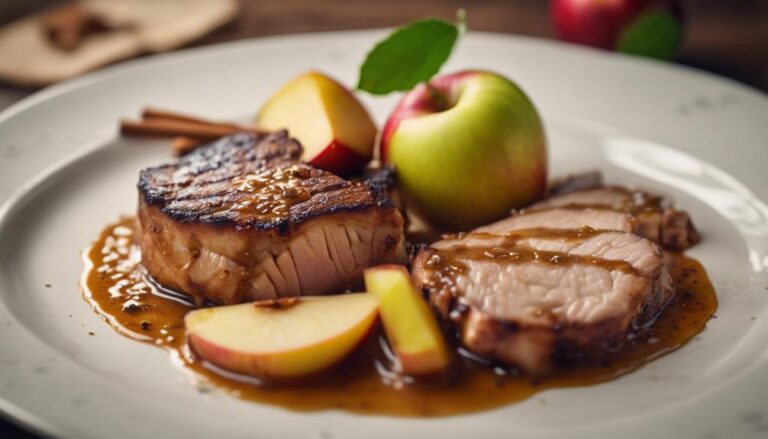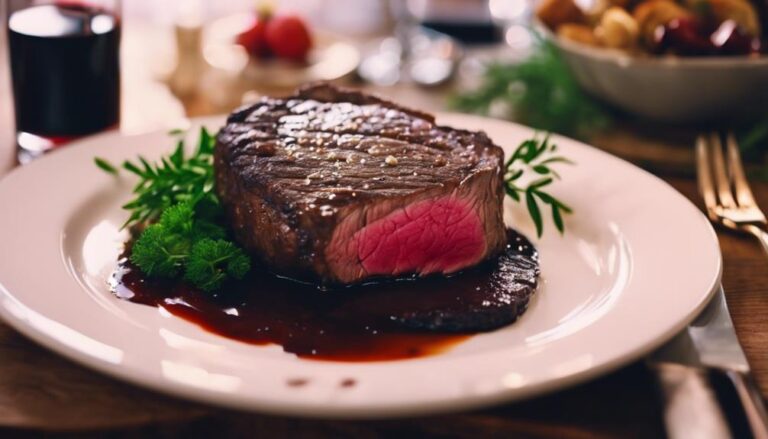Sous Vide Butternut Squash Noodles
To guarantee sous vide butternut squash noodles, ensure precise knife skills for even cuts to enhance cooking. Season with olive oil, salt, pepper, and herbs like rosemary for a tender, flavorsome outcome. Cooking time adjustments will impact the final texture. For experimentation, pair with citrus zest, smoked paprika, or cinnamon to elevate the dish. Get creative with spices for a unique twist. Perfecting these steps ensures a delightful culinary experience.
What You Will Learn Here
- Blanch butternut squash noodles before sous vide for improved texture.
- Season with salt, pepper, and herbs like rosemary for enhanced flavor.
- Experiment with citrus zest, spices, or sweeteners for diverse tastes.
- Ensure precise cutting for even cooking and visual appeal.
- Adjust cooking time in sous vide for desired noodle texture.
Butternut Squash Origins
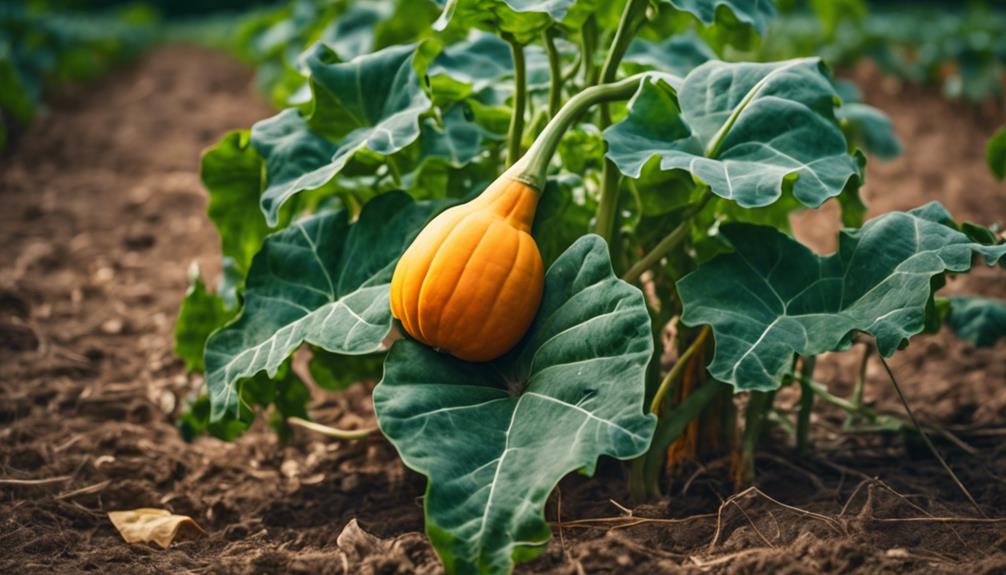
Butternut squash has a rich historical background, originating in Central and South America thousands of years ago.
Its nutritional benefits, such as being rich in vitamin A and fiber, have contributed to its popularity in modern diets.
The culinary versatility of butternut squash allows for a wide range of dishes, from comforting soups to creative pasta alternatives.
Squash's Historical Roots
Rooted in ancient civilizations across the Americas, the origins of this versatile squash variety trace back thousands of years. Butternut squash, a staple in squash recipes and culinary history, has a rich historical background that showcases its importance in indigenous cultures.
Believed to have originated in what's now known as Mexico and Central America, this squash was an essential component of the diet of many ancient societies. Its cultivation spread across North and South America, becoming a significant part of the culinary traditions of various tribes and civilizations.
From being used in stews and soups to being roasted or mashed, the butternut squash's adaptability and nutritional value made it a prized ingredient, highlighting its enduring relevance in modern cuisine.
Nutritional Benefits Highlighted
With a wealth of essential nutrients and health benefits, discovering the nutritional profile of this ancient squash variety reveals its significance in promoting overall wellness.
Butternut squash is a powerhouse of vitamins A and C, providing antioxidants that support immune function and skin health. It also contains fiber, potassium, and magnesium, essential for heart health and digestion.
When cooked using innovative techniques like sous vide, butternut squash retains more nutrients compared to traditional methods, ensuring you get the maximum nutritional benefits.
Culinary Versatility Explored
Exploring the culinary versatility of butternut squash starts with understanding its fascinating origins and historical significance in various cuisines. Butternut squash, with its sweet and nutty flavor profile, has been a staple in kitchens around the world for centuries. By delving into the unique techniques and exploring flavors that complement this versatile ingredient, you can discover a world of creative culinary possibilities. Let's take a closer look at some interesting facts about the origins of butternut squash:
| Butternut Squash Origins | Historical Significance |
|---|---|
| Native to the Americas | Used by Native Americans for its flavor and nutritional benefits |
| Introduced to Europe in the 16th century | Adopted in European cuisines for its rich taste and vibrant color |
| Popular in Asian cuisines | Incorporates well into stir-fries and soups |
| Symbol of fall in North America | Featured in traditional Thanksgiving dishes |
Butternut Squash Varieties
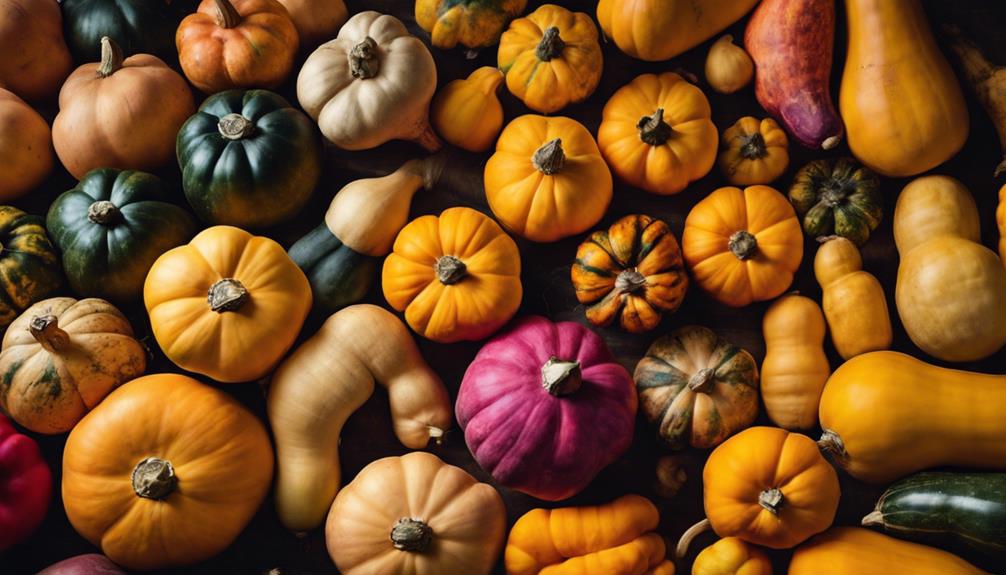
When looking at butternut squash varieties, you may notice subtle differences in color, shape, and size that can impact their flavor and texture profiles. Here are three key points to keep in mind:
- Color Variation: Butternut squash varieties can range from pale yellow to a deep tan or even orange hue. The color can indicate the level of ripeness and sweetness, with darker shades often being riper and sweeter.
- Shape Diversity: While most butternut squashes have a bell-like shape with a bulbous end and a longer neck, there are variations in how pronounced these features are. Some varieties may have a more elongated neck, while others have a rounder shape overall.
- Size Matters: Butternut squash can vary significantly in size, from small individual servings to large, family-sized ones. The size can impact cooking times and the overall yield of flesh for recipes. Selecting the right size for your dish is important for achieving the desired outcome in flavor and texture.
Butternut Squash Noodle Delights
You'll love the variety of dishes you can create with butternut squash noodles. From the delicate flavors of sous vide butternut noodles to the vibrant mix of a savory butternut noodle medley, there's a world of culinary possibilities.
Take your taste buds on a flavorful journey with a delicious butternut squash noodle stir-fry.
Sous Vide Butternut Noodles
Crafting these Butternut Squash Noodle Delights requires precise temperature control and a keen eye for texture perfection. To create exquisite Sous Vide Butternut Noodles, follow these essential steps:
- Temperature Precision: Set your sous vide machine to 185°F (85°C) for 1 hour to achieve a tender yet al dente noodle texture.
- Flavor Infusion: Before vacuum-sealing the butternut noodles, add a drizzle of olive oil, minced garlic, and a sprinkle of thyme for a herbaceous kick.
- Finishing Touch: After sous vide cooking, briefly sauté the noodles in a hot skillet with butter to caramelize the edges and enhance the overall flavor profile.
Savory Butternut Noodle Medley
To elevate the culinary experience beyond traditional pasta dishes, explore the intricate flavors of the Savory Butternut Noodle Medley, a symphony of textures and tastes in each bite.
When delving into noodle alternatives, the butternut squash noodles stand out for their unique sweetness and satisfying crunch. Pairing these noodles with ingredients like earthy mushrooms, tangy goat cheese, and aromatic sage creates a harmonious blend of flavors that will tantalize your taste buds.
The versatility of butternut squash allows for endless creativity in incorporating different ingredients to suit your preferences. Experiment with various butternut pairings to discover new and exciting flavor combinations that will revolutionize your dining experience.
Butternut Squash Noodle Stir-Fry
For a delectable fusion of flavors and textures, prepare the Butternut Squash Noodle Stir-Fry, a delightful culinary creation that marries the sweetness of butternut squash noodles with a medley of vibrant ingredients.
When making this dish, consider the following:
- Spiralizer benefits: Utilize a spiralizer to transform butternut squash into long, thin noodles, enhancing the dish's visual appeal and texture.
- Butternut alternatives: Experiment with other winter squashes like acorn or delicata for a unique twist on traditional butternut squash noodles.
- Stir fry creativity: Infuse your stir-fry with creativity by incorporating colorful vegetables, protein sources, and a flavorful sauce to complement the natural sweetness of the butternut squash noodles.
Prepare to delight your taste buds with this innovative Butternut Squash Noodle Stir-Fry!
Enhancing Butternut Noodle Texture
To enhance the texture of your butternut squash noodles, consider utilizing cooking techniques that bring out their natural flavors and consistency.
The way you cut the squash noodles can greatly impact their texture, so pay attention to the size and shape of your cuts.
Seasoning plays an essential role in achieving the perfect texture, so experiment with different combinations to elevate the overall experience.
Texture-Enhancing Cooking Techniques
Using a quick blanching technique before sous vide cooking can help enhance the texture of butternut squash noodles.
This method involves briefly immersing the noodles in boiling water for about 1-2 minutes, followed by immediate cooling in an ice water bath.
Blanching helps to soften the noodles slightly, making them more pliable while still retaining their shape. By pre-cooking the noodles this way, you can guarantee that they'll have a more consistent texture throughout the sous vide process.
This texture-enhancing step can be a game-changer in achieving perfectly tender yet firm butternut squash noodles.
These texture secrets and cooking hacks can elevate your dish to a whole new level, providing a satisfying dining experience.
Importance of Cutting
Enhancing the texture of butternut squash noodles begins with the importance of your cutting technique. Knife skills play a vital role in achieving uniform pieces, ensuring even cooking throughout the noodles. When cutting the butternut squash, focus on consistency in size to promote a harmonious cooking process. Precision cutting leads to noodles that are not only visually appealing but also cook uniformly, resulting in a perfect texture. By mastering the art of knife skills, you set the foundation for a delightful culinary experience with your butternut squash noodles.
| Importance of Cutting | Benefits |
|---|---|
| Knife skills | Improved texture |
| Precision cutting | Uniform pieces for even cooking |
Seasoning for Perfect Texture
Achieving the perfect texture for your butternut squash noodles relies heavily on carefully incorporating seasonings. Enhancing the texture of your noodles involves using a combination of salt, pepper, and olive oil before cooking. These seasonings not only add flavor but also aid in tenderizing the squash, resulting in a more enjoyable texture.
Moreover, experimenting with different herbs like rosemary or thyme can elevate the overall taste and aroma of the dish while contributing to a satisfying texture. When seasoning your butternut squash noodles, it's essential to take into account your flavor preferences and adjust the seasonings accordingly.
Final Thoughts
In conclusion, consider experimenting with different seasonings to enhance the flavors of your sous vide butternut squash noodles. When exploring flavor profiles, think about combining aromatic herbs like rosemary or thyme with a hint of citrus zest for an invigorating twist. You can also play around with spices such as smoked paprika or cumin to add depth and warmth to the dish. Don't be afraid to get creative and try unconventional pairings like a sprinkle of cinnamon or a dash of nutmeg for a surprising flavor burst.
In addition to flavor experimentation, don't forget about the cooking techniques. Adjusting the cooking time slightly can make a significant difference in the texture of your butternut squash noodles. Aim for a slightly al dente texture if you prefer a bit of bite or go for a softer texture by increasing the cooking time. By mastering both the seasoning and cooking techniques, you'll be able to create a truly exceptional sous vide butternut squash noodle dish that will impress even the most discerning palates.
Frequently Asked Questions
Can I Use Frozen Butternut Squash for Making Noodles?
You can use frozen butternut squash for noodles, but fresh is best for texture and flavor. Benefits of frozen squash include convenience and availability. Zucchini or sweet potato can substitute for butternut squash noodles if needed.
How Long Can I Store Cooked Butternut Squash Noodles?
To store cooked butternut squash noodles, keep them in an airtight container in the fridge for up to 4 days. Check for any signs of spoilage like off-putting odors, mold, or sliminess to guarantee freshness.
Can I Use Other Types of Squash for Noodle Substitutes?
When considering noodle substitutes, explore spaghetti squash options for a stringy texture akin to traditional pasta. Acorn squash swaps offer a sweet, nutty flavor profile that adds a unique twist to your dishes.
How Can I Prevent Butternut Squash Noodles From Getting Mushy?
To maintain texture, avoid overcooking butternut squash noodles. Try blanching for a few minutes before cooking to retain firmness. Experiment with different spiralizing methods for varied shapes. Enhance flavor profiles with seasonings and diverse cooking techniques.
Are Butternut Squash Noodles a Good Option for Meal Prepping?
Butternut squash noodles offer great nutritional benefits and allow for diverse flavor variations when meal prepping. They are low in calories, high in fiber, and versatile to pair with various sauces and protein sources.
Conclusion
To sum up, sous vide butternut squash noodles offer a unique twist on traditional pasta dishes. By enhancing the texture through precise cooking techniques, you can create a delightful and nutritious meal that's sure to impress.
Experiment with different varieties of butternut squash to add depth of flavor to your dishes.
Overall, sous vide butternut squash noodles are a versatile and delicious addition to any culinary repertoire.
